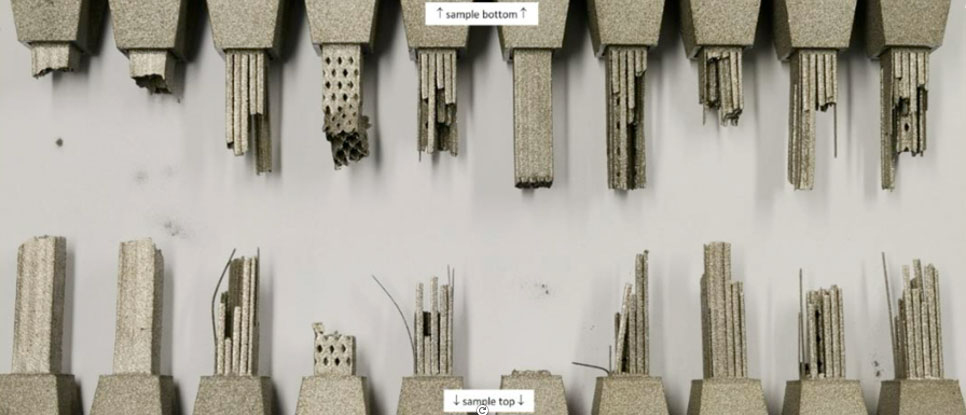Forschungs- und Technologietransfer GmbH (FOTEC), a research subsidiary of the University of Applied Sciences Wiener Neustadt, has developed key technologies for the integration of additive manufacturing into industrial process chains as part of the international joint project Ad-Proc-Add II. The focus was on automated post-processing using Hirtisation, the characterization of additively manufactured surfaces, and the development of database systems for process optimization.
The project, funded by the Austrian Research Promotion Agency (FFG), the German Federal Ministry for Economic Affairs and Climate Action (BMWK), and the Flanders Agency for Innovation & Entrepreneurship (VLAIO), was coordinated by the ecoplus Mechatronics Cluster, FKM, and KU Leuven. Its aim was to make additive-subtractive manufacturing chains economically viable – including for small and medium-sized enterprises (SMEs).
In this context, FOTEC acted as a leading player in the field of Laser Powder Bed Fusion (PBF-LB/M) as well as in electrochemical and mechanical post-processing.
FOTEC Forschungs- und Technologietransfer GmbH is a research subsidiary of the University of Applied Sciences Wiener Neustadt and stands for application-oriented research in manufacturing technology, additive manufacturing, robotics, and digitalization. With state-of-the-art laboratory facilities and close industry collaboration, FOTEC is one of Austria’s leading technology transfer centers.
Hirtisation – Rethinking Chemical-Electrolytic Post-Processing
A highlight of FOTEC’s contribution was the further development of the Hirtisation technology—an electrochemically assisted post-processing method for support removal, cleaning, and smoothing of PBF-LB/M components. Building on the results of the preceding project, targeted processing strategies were developed for materials such as Ti6Al4V and 1.4404 (stainless steel).
By adapting PBF-LB/M process parameters, machining allowances as low as 180–550 µm could be defined—an important step toward material-efficient, automated post-processing. At the same time, surface roughness values of Sa ≤ 5 µm were achieved, enabling the precise functionalization of AM components.
Targeted Control of Surface Quality
As part of the project, FOTEC conducted extensive investigations into the surface integrity of additively manufactured components. The research focused on analyzing how various PBF process parameters, build orientations, and intermediate treatments influence the final surface properties.
Special attention was given to the interaction with processes such as shot peening, heat treatment, and CNC profile grinding. The resulting surface matrix provides a solid foundation for the targeted combination and optimization of additive and subtractive process steps.
Digitally Connected – Data Management in Hybrid Process Chains
A major contribution to digital continuity was the development of a cross-process data management system, implemented in the current project by the Institute of Production Engineering and Photonic Technologies at TU Wien in collaboration with project partners. In a prototype setup, a hybrid CAM system was supplied with multi-sensor real-time data, from which tool paths were automatically generated.
By integrating sensor data, material properties, and geometry information, an intelligent, adaptive CAM control system was created—marking a milestone in the automation of complex Additive-Subtractive Manufacturing (ASM) process chains.
Application-Oriented and Transfer-Focused
FOTEC’s research efforts were characterized by a strong application focus. Throughout the project, test specimens and use cases were produced and analyzed using materials such as Ti64, 316L, and AlSi10Mg. Close collaboration with the 15 industrial partners—including companies from the aerospace, tooling, and medical technology sectors—ensured that the developed processes could be directly transferred to real-world manufacturing scenarios.

 Deutsch (Germany)
Deutsch (Germany)  Polski (PL)
Polski (PL) 










